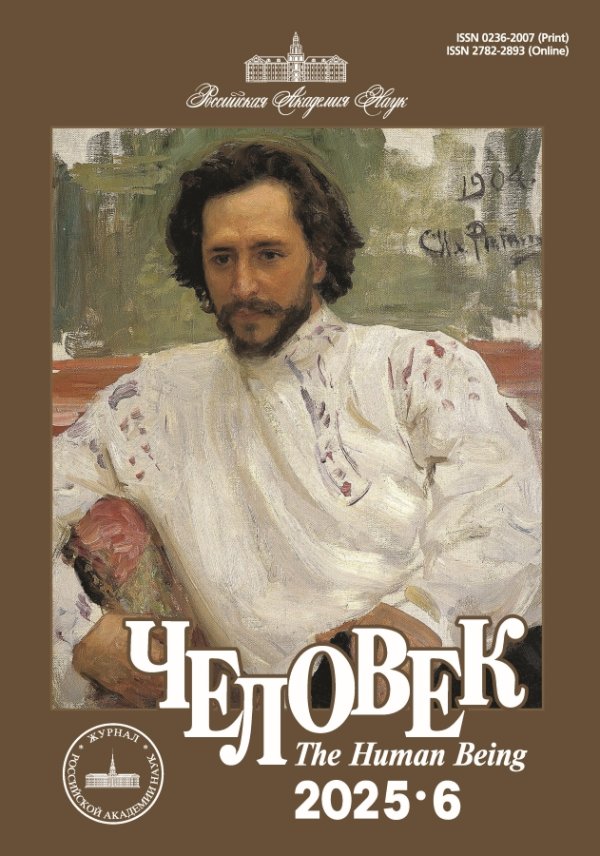Virtualization of pregnancy: game and reality
- Authors: Bylieva D.S.1
-
Affiliations:
- Peter the Great St.Petersburg Polytechnic University (SPbPU)
- Issue: Vol 34, No 6 (2023)
- Pages: 100-119
- Section: Social practices
- URL: https://journals.rcsi.science/0236-2007/article/view/251311
- DOI: https://doi.org/10.31857/S023620070026670-4
- ID: 251311
Full Text
Abstract
About the authors
Daria Sergeevna Bylieva
Peter the Great St.Petersburg Polytechnic University (SPbPU)
ORCID iD: 0000-0002-7956-4647
29, Politekhnicheskaya, St. Petersburg 195251, Russian Federation
References
- Гаджиян И.В. Проблемы виртуализации образования // Теория и практика современной науки. 2019. № 6 (48). C. 159–163.
- Дробышева Е.Э. Культура vs цивилизация: взгляд через «Окно Овертона» // Вестник Московского государственного университета культуры и искусств. 2015. № 5(67). C. 58–64.
- Иванов Д.В. Виртуализация общества. М.: Версия 2.0, 2002.
- Межевникова О.П., Ухина Т.В. Виртуализация социальных институтов // Сервис plus. 2020. № 1(14). C. 41–48.
- Мордас Е.С., Харисова Р.Р. Беременность как стадия личностного развития женщины // Консультативная психология и психотерапия. 2018. № 2(26). C. 135–150.
- Рыбант И.В. Проблема становления и реализации женщины в образе матери на современном этапе развития Западной культуры // Актуальные проблемы гуманитарных и естественных наук. 2010. № 4. C. 170–175.
- Селиванова Д.И. Влияние человеческих страхов и желаний на фильмы ужасов // Вопросы науки и образования. 2019. № 66(19). C. 44–48.
- Сироткин П.Ф. Виртуализация церкви: проблемы и перспективы // Вестник Пермского университета. Философия. Психология. Социология. 2023. № 3. C. 396–403.
- Толковый словарь русского языка /под ред. Д.В. Дмитриева, Д. Н. Ахапкина. М.: Астрель, 2003.
- Aguilera-Castrejon A. Ex utero mouse embryogenesis from pre-gastrulation to late organogenesis. Nature. 2021. Vol. 7857 (593). P. 119–124.
- Beauvoir S. D. The Second Sex. New York: Vintage, 2011.
- Berkhout S.G. Buns in the Oven: Objectification, Surrogacy, and Women’s Autonomy. Social Theory and Practice. 2008. Vol. 1(34). P. 95–117.
- Bourdieu P. Distinction: A Social Critique of the Judgement of Taste. London: Routledge, 2014.
- Brakman S.-V., Scholz S. J. Adoption, ART, and a Re-Conception of the Maternal Body: Toward Embodied Maternity. Hypatia. 2006. Vol. 1 (21). P. 54–73. doi: 10.1111/j.1527-2001.2006.tb00964.x
- Déchaux J.-H. Being Born in the Era of Genomics. Health, Technology and Society / Ed. I. Voléry, M.-P. Julien, Singapore: Springer, 2020. P. 125–151. DOI: https://doi.org/10.1007/978-981-15-7582-2_5
- Deglincerti A. Self-organization of the in vitro attached human embryo. Nature. 2016. Vol. 7602(533). P. 251–254. doi: 10.1038/nature17948
- Edwards M.R. Blueprint for forever: Securing human far futures with ectogenesis. Futures. 2023. Vol. 146. P. 103085. doi: 10.1016/j.futures.2022.103085
- French М. The Women's Room. New York: Ballantine Books, 1993.
- Ekman K. E. Being and being bought:prostitution, surrogacy and the split self. North Melbourne, Victoria: Spinifex, 2013.
- Jönsson K. Det förbjudna mödraskapet: en moralfilosofisk undersökning av surrogatmödraskap. Malmö: Bokbox, 2003.
- Lomanowska A. M., Guitton M. J. My avatar is pregnant! Representation of pregnancy, birth, and maternity in a virtual world. Computers in Human Behavior. 2014. Vol. 31. P. 322–331. doi: 10.1016/j.chb.2013.10.058
- Lombard J. Biotechnological Agencies in our Information Society: The Emergence of Biocitizenship and the Genetic Language. Technology and Language. 2021. Vol. 4 (2). P. 73–93. DOI: https://doi.org/10.48417/technolang.2021.04.05
- Mehta A., Saraswat S., Paul M.F. A critique of baby making supermarts: Surrogacy clinics in Kishwar Desai’s Origins of Love (2012). Research Journal in Advanced Humanities. 2022. Vol. 4 (3). P. 115–128. doi: 10.58256/rjah.v4i1.958
- Milani B. On the Mythical Atmosphere of the Digital World. Technology and Language. 2022. Vol. 4 (9). P. 21–29. doi: 10.48417/technolang.2022.04.03
- Monaro F. The Pledge, the Turn, the Prestige: The Border Between Magic and Technology as Practices. Technology and Language. 2022. Vol. 4 (9). P. 30–41. doi: 10.48417/technolang.2022.04.04
- Mullin A. Reconceiving Pregnancy and Childcare: Ethics, Experience, and Reproductive Labor. Cambridge University Press, 2005.
- Oakley A. The captured womb: A history of the med. care of pregnant women. Oxford; New York: Blackwell, 1984.
- Romanis E. C. Artificial womb technology and the frontiers of human reproduction: conceptual differences and potential implications. Journal of Medical Ethics. 2018. Vol. 11 (44). P. 751–755. doi: 10.1136/medethics-2018-104910
- Rothman B. K. Motherhood under capitalism. Consuming Motherhood / Ed. J. Taylor, L. Layne, D.F. Wozniak. New Brunswick: Rutgers University Press, 2004. P. 19–30.
- Scott E.S. Surrogacy and the Politics of Commodification. Law and Contemporary Problems. 2009. Vol. 72. P. 109–146.
- Shahbazi M. N. Self-organization of the human embryo in the absence of maternal tissues. Nature Cell Biology. 2016. Vol. 6 (18). P. 700–708. doi: 10.1038/ncb3347
- Singh J., Khanna P. K., Khanna, A. Consensual Violence against Surrogate Mothers in Kishwar Desai’s The Origins of Love. Paripex- Indian Journal of Research. 2015. Vol. 2 (4). P. 90–92.
- Usuda H. Successful maintenance of key physiological parameters in preterm lambs treated with ex vivo uterine environment therapy for a period of 1 week. American Journal of Obstetrics and Gynecology. 2017. Vol. 4 (217). P. 457.e1-457.e13. doi: 10.1016/j.ajog.2017.05.046
- Usuda H. Successful use of an artificial placenta to support extremely preterm ovine fetuses at the border of viability. American Journal of Obstetrics and Gynecology. 2019. Vol. 1 (221). P. 69.e1-69.e17. doi: 10.1016/j.ajog.2019.03.001
- Zaami S. From the maternal uterus to the “uterus device”? Ethical and scientific considerations on partial ectogenesis. European Review for Medical and Pharmacological Sciences. 2021. Vol. 23 (25). P. 7354–7362. doi: 10.26355/eurrev_202112_27429










